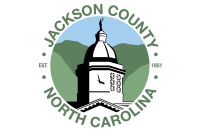They’re baaaaccckkk!
In late March there was a lot of talk on the Carolina birders’ listserv about early migration as Neotropical migrants began showing up. By April 1 we had already recorded blue-headed vireo, northern rough-winged swallow, blue-grey gnatcatcher and black-throated green warbler at Balsam Mountain Preserve.
Then the big chill hit over Easter weekend, and everything came to a screeching halt. By April 15 we had added only black-and-white warbler, ovenbird, yellow-throated vireo and black-throated blue warbler to the Balsam Mountain Preserve list.
On Saturday, April 21, I led the first of two scheduled bird walks in the Waynesville watershed as part of the town’s Watershed Appreciation Month. We finished the two-hour walk with 25-30 species but still only a few new arrivals. In fact we had as many lingering winter residents as we did spring arrivals. The hangers-on included red-breasted nuthatch, golden-crowned kinglet, ruby-crowned kinglet, white-throated sparrow and yellow-rumped warbler. New arrivals were black-and-white warbler, black-throated green warbler, ovenbird, blue-headed vireo, black-throated blue warbler and northern rough-winged swallow.
What a difference a day makes
The skies over Western North Carolina that Saturday night must have looked like malfunction junction in Asheville at 5 p.m. on Friday afternoon. I hope there weren’t any feather-benders.
Bob Olthoff and I were both lamenting about how late and slow migration was this spring as we headed to Balsam Mountain Preserve on Sunday morning to look for new arrivals. Bob had been up to the Hot Springs and Max Patch areas on Saturday, and migrants had been few and far between, but there was an omen at the Balsam Mountain Preserve gatehouse.
Related Items
As we stopped to get our pass, a hooded warbler – a new arrival – was singing from the roadside. We hadn’t made it a half-mile past the gatehouse before we had three more FOS (first of the season) species for the Balsam Mountain Preserve. They were American redstart, wood thrush and northern parula. The woods were alive with migrants; a cacophony of birdsong rollicked through the forest. I believe we added eight FOS species to this year’s list. Besides the species listed above there were, blackburnians, worm-eating warblers, chestnut-sided warblers and rose-breasted grosbeaks.
My yard and feeders reflect this influx of new arrivals. I have wood thrush and hooded warblers singing from the woods around by home. There is, presently, a small flock of 10 to 12 rose-breasted grosbeaks emptying my feeders almost daily. One of the crew is an exotic-looking first year male that is still molting into breeding plumage.
Ruby-throated hummingbirds have also returned. Ours showed up on April 19 this year. It looks like the big chill slowed him down by about four days. I also heard my FOS scarlet tanager singing from the woods near my home last week.
It’s good to have all these guys back. I’m still waiting for my FOS indigo bunting, Canada warbler, golden-winged warbler and cerulean warbler, plus, of course those migrants such as blackpoll, magnolia, Cape May and bay-breasted that will just be passing through.
I believe spring may finally be here, but then again there is blackberry winter.









